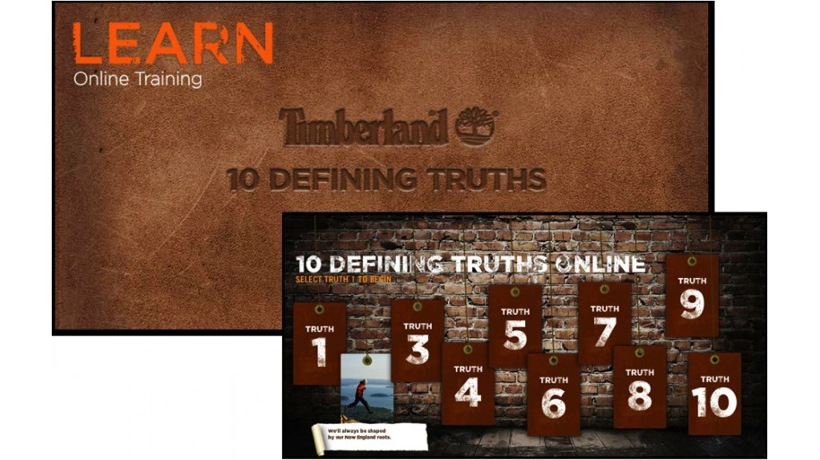Product-Led Growth Marketing
Imagine if your customers were the primary driving force behind your eLearning SaaS product. Imagine if instead of shelling money out on expensive marketing campaigns, your product could do the "selling" for you. Wouldn't that be great? That's the power of product-led growth (PLG) marketing in a nutshell. Successful companies like Slack, Zoom, Dropbox, among others are examples of product-led growth done right.
What Is eLearning Product-Led Growth Marketing?
In today's competitive software market, marketing alone cannot boost sales. Marketers need product-led growth to drive consumption. But what is product-led growth marketing? Quite simply, it is:
- A marketing approach that leverages product as the primary driving force to attain, activate, and retain customers
It does so by offering value without asking for anything in return from the customers—in other words, it's growth without any marketing/sale dependencies and often includes a non-committal pricing policy. - A strategy that leverages product as a "channel" to boost organizational Key Performance Indicators (KPIs)
For example, revenue, engagement, reach, and so on. - A type of customer-centric growth model, which requires organization-wide alignment
This alignment across departments and teams is needed to leverage the product as a focal point for driving scalable and sustainable growth and customer retention goals. - Mutually inclusive with the product experience
The end-goal is of delivering "value" to the customer early on in the customer life cycle, by solving real-world issues to get users "hooked" to the product and encourage habit-building, ultimately driving customer stickiness. - A type of model that offers a low-barrier-to-entry by empowering customers to self-serve
Customers adopt the product independently through in-product discoverability as opposed to a forced sales demo process. For instance, enabling users to engage in seamless product onboarding themselves is a sure-shot way of driving product adoption
If you've come across the terms "free trial," "a forever free version," "freemium," "try-before-you-buy," etc., you've witnessed product-led growth marketing in action. As the product solves unique user needs or problems without costing customers a dime, users become self-confessed brand advocates and spread the good word about the product, increasing product popularity and reach in the process—the ultimate goal of product marketing.
Key Differences Between Product-Led Growth, Sales-Led Growth, And Marketing-Led Growth
Product-Led Growth
- Approach
This approach entails using the product to guide the customer throughout the sales funnel process. Customers experience the product first-hand and convert at their own pace. - End goal
The end goal is habit-building, where customers get hooked to the product—by way of unique features, an enticing pricing model, and so on—and this encourages them to pay for the subscription. - Desired action
If the customers start engaging in positive word-of-mouth publicity or pay for the subscription after trying the freemium model, product-led growth is working. - Methodology
It is customer-focused and product-driven from start to finish.
Marketing-Led Growth
- Approach
The approach entails putting brand/product/industry information in the user's hands to elicit interest/response. It starts with setting up paid advertisements on platforms such as Facebook, Instagram, Google, etc. Once a potential customer sees the ad and interacts with it, they become a market qualified lead (MQL), who is then passed on to the sales team. - End goal
The end goal here is to engage in effective knowledge sharing and let potential customers know the product well. Marketers want prospects to ultimately use the product. - Desired action
If the lead clicks on an ad or interacts with the brand/product in the way originally intended, marketing-led growth is working. - Methodology
It is brand- or product-focused from start to finish.
Sales-Led Growth
- Approach
Once the customer becomes an MQL, the salesperson works toward driving the purchasing process by leveraging strategies such as making outbound sale calls, driving customer relationships, conducting one-on-one meetings, and paving the way for a customized sales process. This process is often lengthy and tedious, and customers do not get a chance to try the product. - End goal
The end goal here is to emphasize the benefits of the product, get to know the potential customer, understand their key pain points and challenges, and personalize the buying experience. - Desired action
If the lead makes a purchase, they are passed over to the customer success team to enhance the overall customer experience further. - Methodology
It is product-focused and user-oriented from start to finish.
Top 4 Advantages Of eLearning Product Growth
The future of SaaS is product-led. According to research, "PLG companies perform better than their non-PLG peers in the SaaS index” and "product-led businesses are valued more than 30% higher than the public-market SaaS Index Fund.” There are no two ways about it. There are numerous benefits that are contributing to the rising popularity of product-led growth. These include:
1. The Team Becomes User-Focused
One of the biggest advantages of embracing product-led growth is that the product becomes self-sufficient in promoting itself. You don't require additional sales and/or marketing personnel to do the heavy lifting of advocating for the product. Instead, the team members can realign their energies and efforts in understanding how to build a quality product and drive a stellar User Experience, ensuring that everyone wins.
2. Accelerated, "Viral," And Global Growth
The product-led growth model finds many takers as the product popularity can grow online—scalably and sustainably. The sales funnel boasts of a wider top-of-funnel and is literally open for users globally as they try the "freemium" model to gain value from the product. Considering that the users experience the product hands-on, in the palm of their hands, the growth starts gaining momentum quickly.
3. Lower Customer Acquisition Costs
Another irrefutable advantage of product-led growth is that the brand does not need to invest in conducting webinars, demos, etc., to drive sales. Instead, customers can onboard themselves at literally the click of a button. Since customers see the intrinsic value of the product and experience the "aha!" moment with the product right away, the cost of acquisition lowers by a great margin.
4. Shorter Time-To-Value (TTV)
Since users today are wired to gain instant gratification, the product-led growth model emerges as a must-have. As long as the product delivers instant value to the user in real time, the potential users get accustomed to using the product in record time and convert faster.
How To Implement A Robust Growth-Led Strategy: Effective Tips And Strategies
To be product-led means to deliver "instant value" to your customers and resolve their pain points in a simple and convenient way. Here are some tried-and-tested strategies you can embrace to genuinely become product-led.
1. Start By Getting Buy-In From The Internal Team
The success of product-led growth depends on internal buy-in and executive alignment from the bottom-up. You need the marketing, sales, product, and customer support teams to first get on the same page. Additionally, the management team needs to embrace and endorse the PLG strategy by hiring the right people, establishing the right North Star metrics, encouraging communication between teams, and promoting a product model that is customer-centric through and through. The idea is to break down the silos and drive honest real-time communication with respect to PLG progress, successes, failures, learnings, and performance.
2. Identify The Right Set Of Product-Led Goals And Build At The Right Time
Once you've got the buy-in, it's time to chart out the PLG goals that will drive the teams forward. You can adopt the Objectives and Key Results (OKRs) framework for inspiration. The next step is to build accountability and ownership within the team. For this, you'll need to define the roles and responsibilities of each team member who will be accountable for driving growth. Make sure to include product managers, designers, engineers, product marketers, BI analysts, and customer success managers within the team.
3. Do A Product Audit And Deep-Dive To Understand The Value Your Product Brings To The Table
Product-led growth only works if the product is genuinely of good quality, is end user centric, and is able to address the customer's pain points or needs as instantly and conveniently as possible. In other words, if the product does not add value to the prospective user's life, this strategy will fail. So make sure to do your research and understand whether or not your product can fill the customer needs gap effectively. You can do this by either:
- Measuring key metrics such as trial experience, activation rate, churn rate, user upselling, etc.
- Assessing the conversion metrics against the industry benchmark
- Analyzing opportunities across the product and prioritizing features based on user needs/ROI
- Mapping out key user journeys (for example, sign-up to payment) and figuring out the "aha moments" within these journeys, and creating a friction log to assess the associated friction with key tasks at every stage of the sales process
- Monitoring the funnel metrics to understand which actions are causing drop-offs and leading to user churn
4. Communicate The Value Your Product Brings Clearly, Openly, And Consistently
Instead of shying away from the pricing model—which has long been the tradition—communicate about the "free" pricing plans as honestly as possible. Nothing impresses users more than a transparent pricing plan that justifies the product. You also need to clearly demonstrate how the user will benefit from the product in general to get more sign-ups. Don't leave your users connecting the dots. Instead, guide them to buy the most optimal option by being open and transparent within your communication messages.
5. Balance Between The Perceived And Promised Value
In product-led growth, there's no room for underpromising or overpromising. Users want exactly what they signed up for and then some more. In simpler words, make sure to align the perceived value with the "experienced value" at all costs, or you risk garnering negative publicity. Stick to your words and let the freemium plan work its magic.
6. Focus On Your Product Features
Since your product is the star of the show, you need to ensure that you're continually innovating and driving new features to attract new users and retain the existing ones. You can also build enticing reward programs or offer deep discounts to customers who get more users on the platform. This way, the product's popularity will rise organically and sustainably.
7. Implement Analysis Tracking
To be product-led means to be data-rich. You need to invest in the right data analytics tools such as customer data platform, data warehouse, BI tool, event analytics tool, etc. to capture the right data at the right time. Start small and prioritize metrics that are most useful for product efficiency and user happiness. You can track key metrics such as average revenue per user, customer lifetime value, product-qualified leads, net revenue churn, and virality effects to make the most of your product-led strategy.
The Bottom Line
The mantra with product marketing is deceptively simple: build a quality product and see it spread like wildfire. To wrap up, here's a quick summary of product-led growth:
- It puts the product in the driver's seat to acquire, activate, and retain customers. By extension, teams are required to realign their goals and become product-focused from the get-go.
- Customers today want instant gratification, which is where a product-led marketing strategy can be the game-changer your business needs. As new users experience the product firsthand, they benefit from an exceptional User Experience and can convert into lifelong loyal customers.
- The biggest difference between a product-led approach and a traditional one is that, unlike the traditional sales funnel, the product guides customers throughout the sales funnel. Users get to experience the product prior to making a purchase.
- The product-led approach brings forth a four-fold advantage: user-focused teams and customer-centric products, accelerated and scalable global growth, reduced acquisition costs, and shorter time-to-value.
- For brands to ace this strategy, understanding the value they bring to the table and communicating it with clarity are key.
Finally, a product-led approach works because it empowers brands to shift the focus from the brand itself to the end user—from understanding their needs, behaviour, challenges, etc. to building a customer-centric product. As customers increasingly self-educate and experience the product themselves, they will take greater control of driving product success. On the other hand, the brand benefits from an automated customer success workflow that's in-built within the product.








